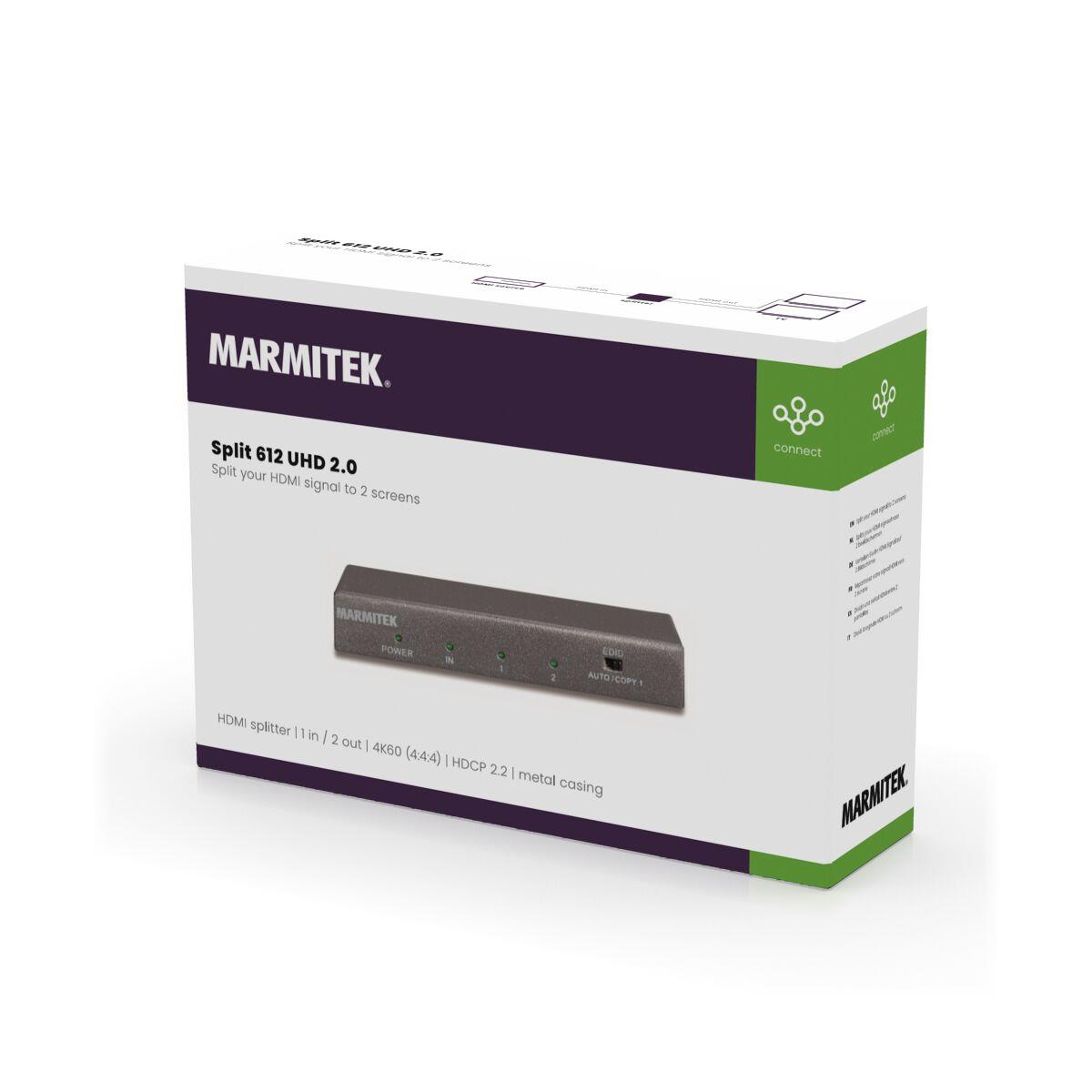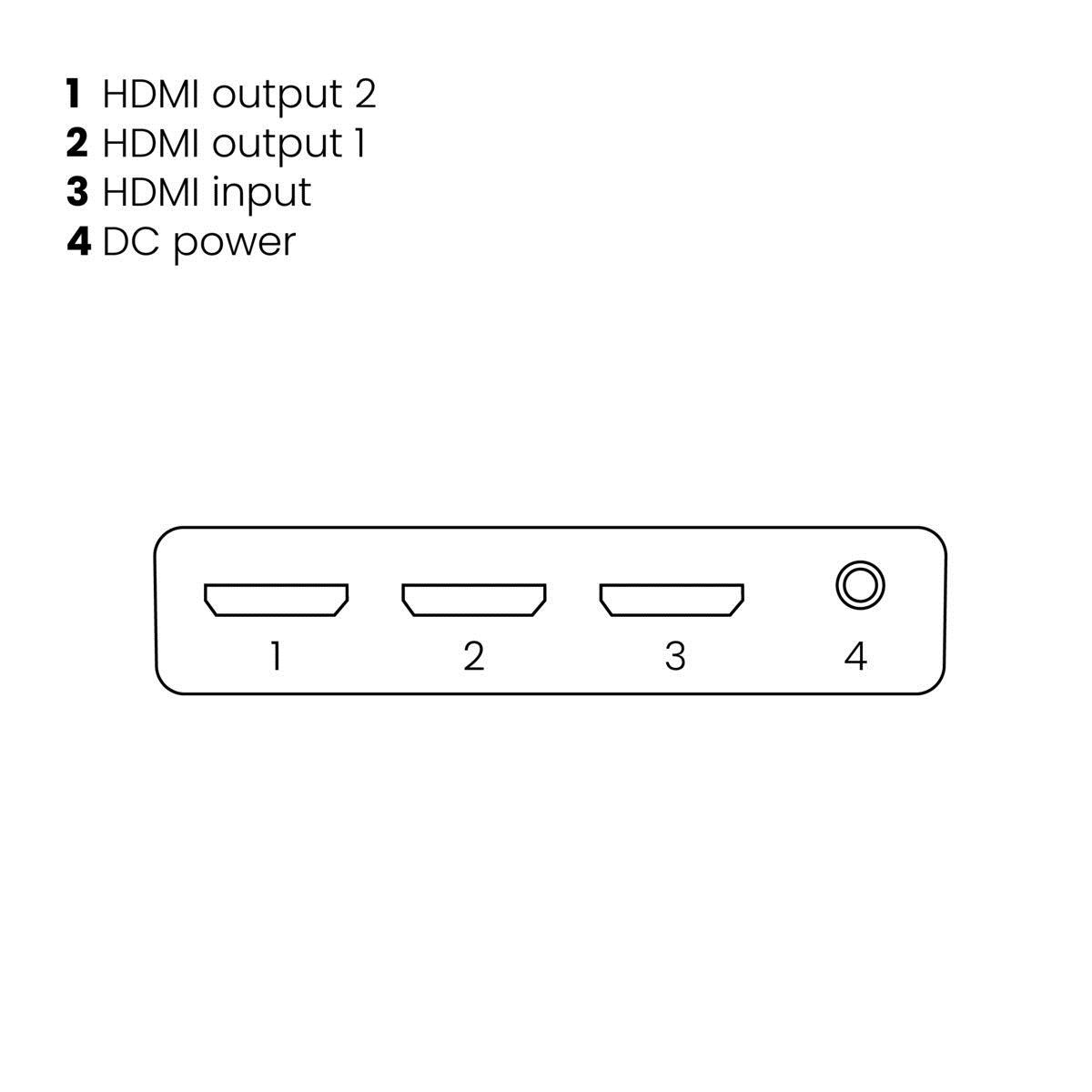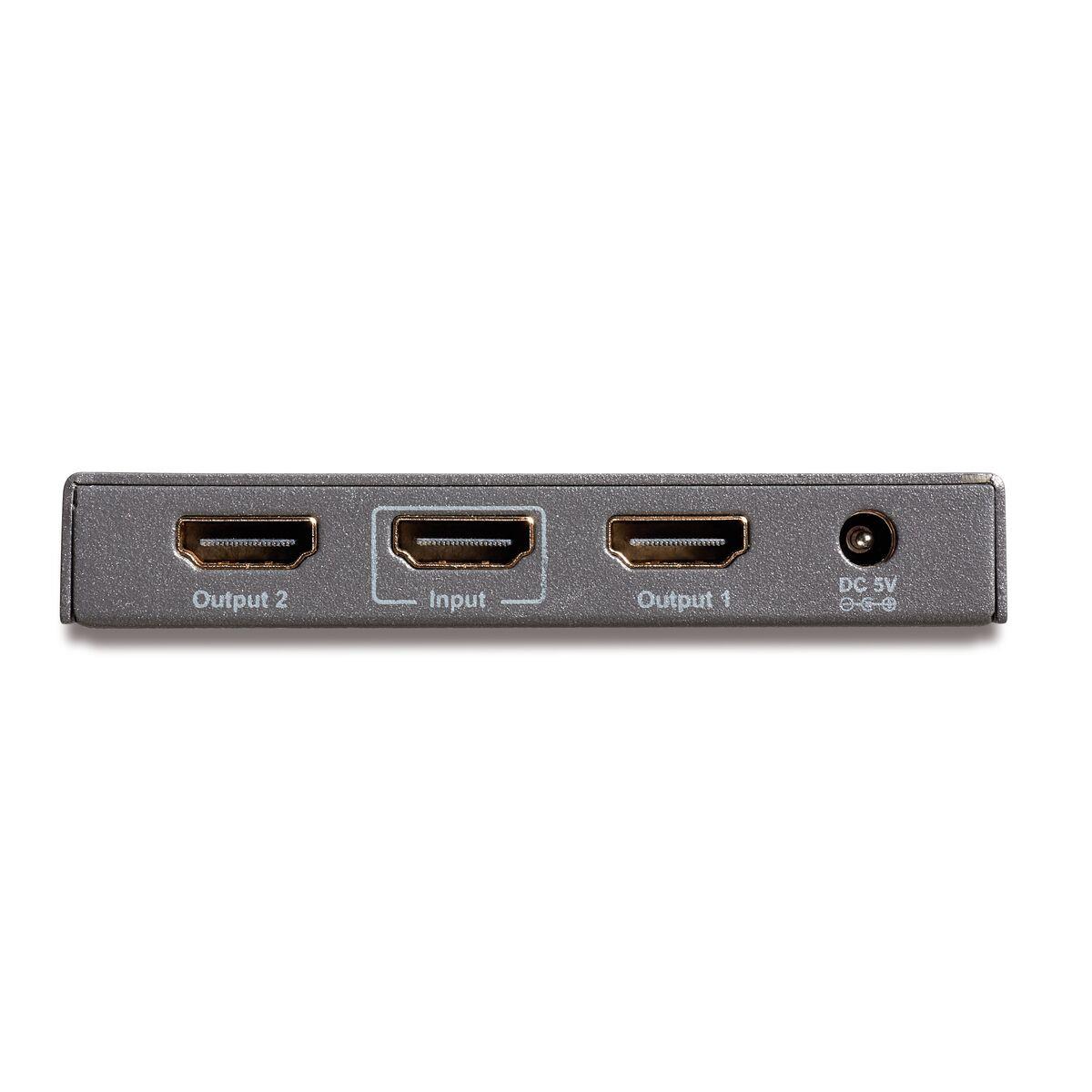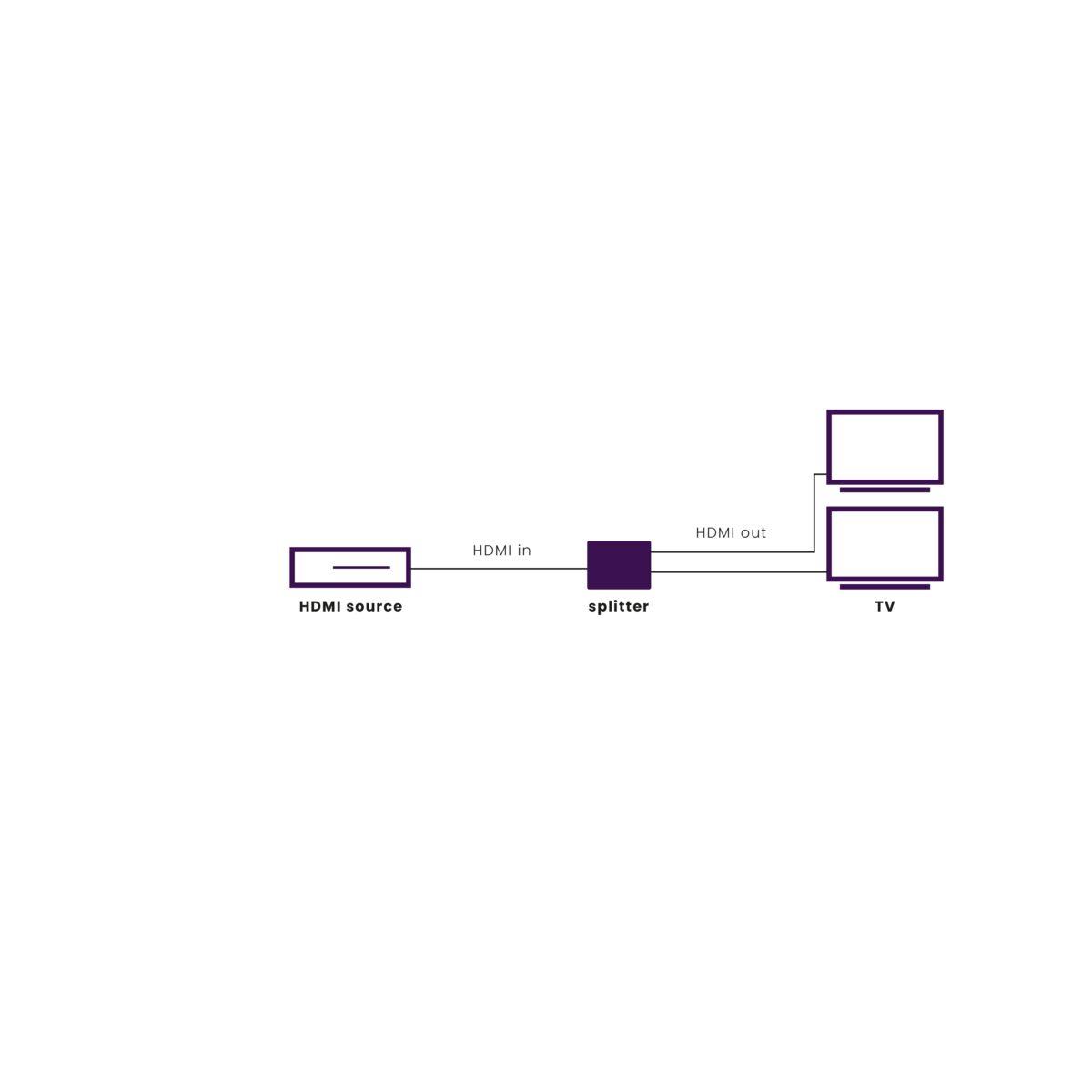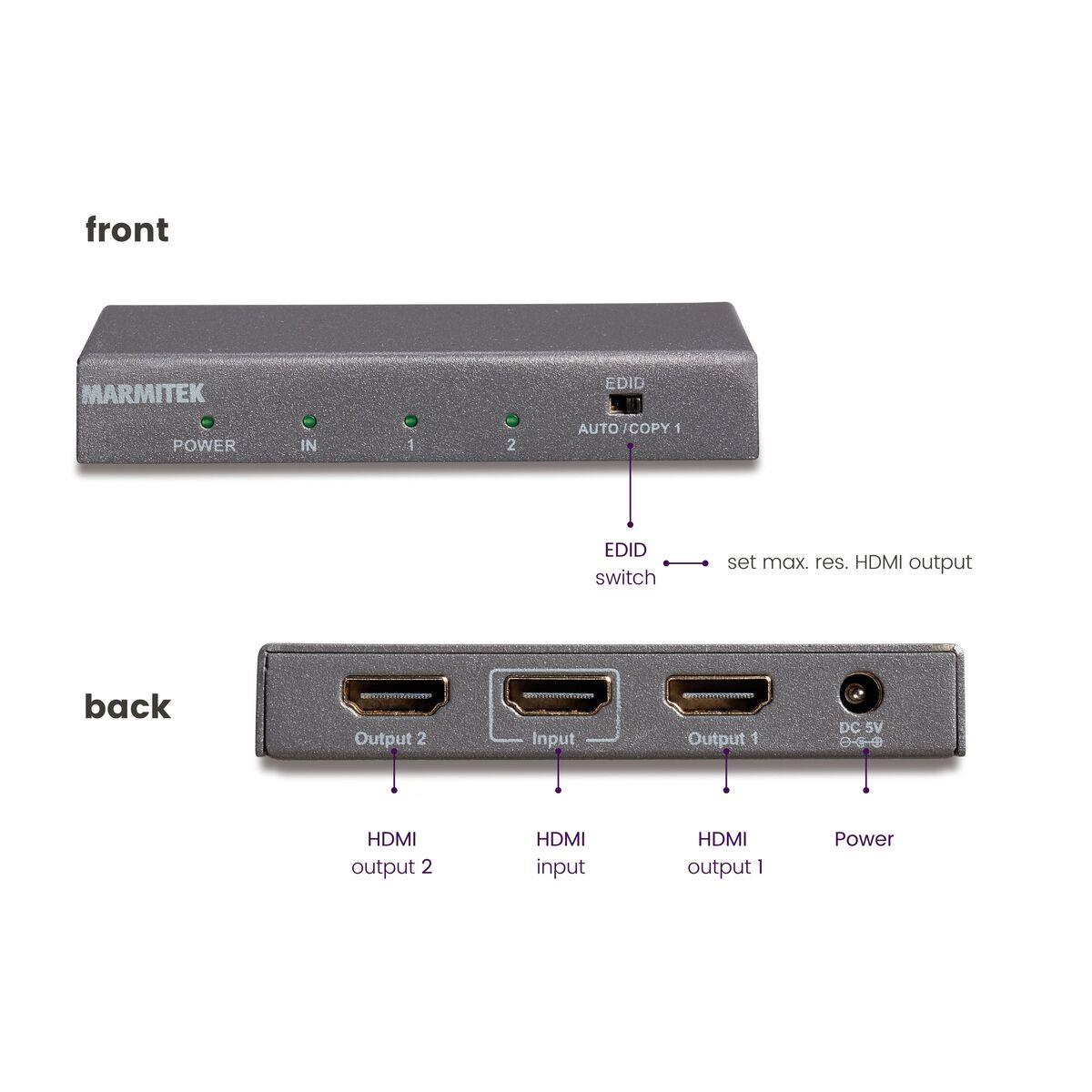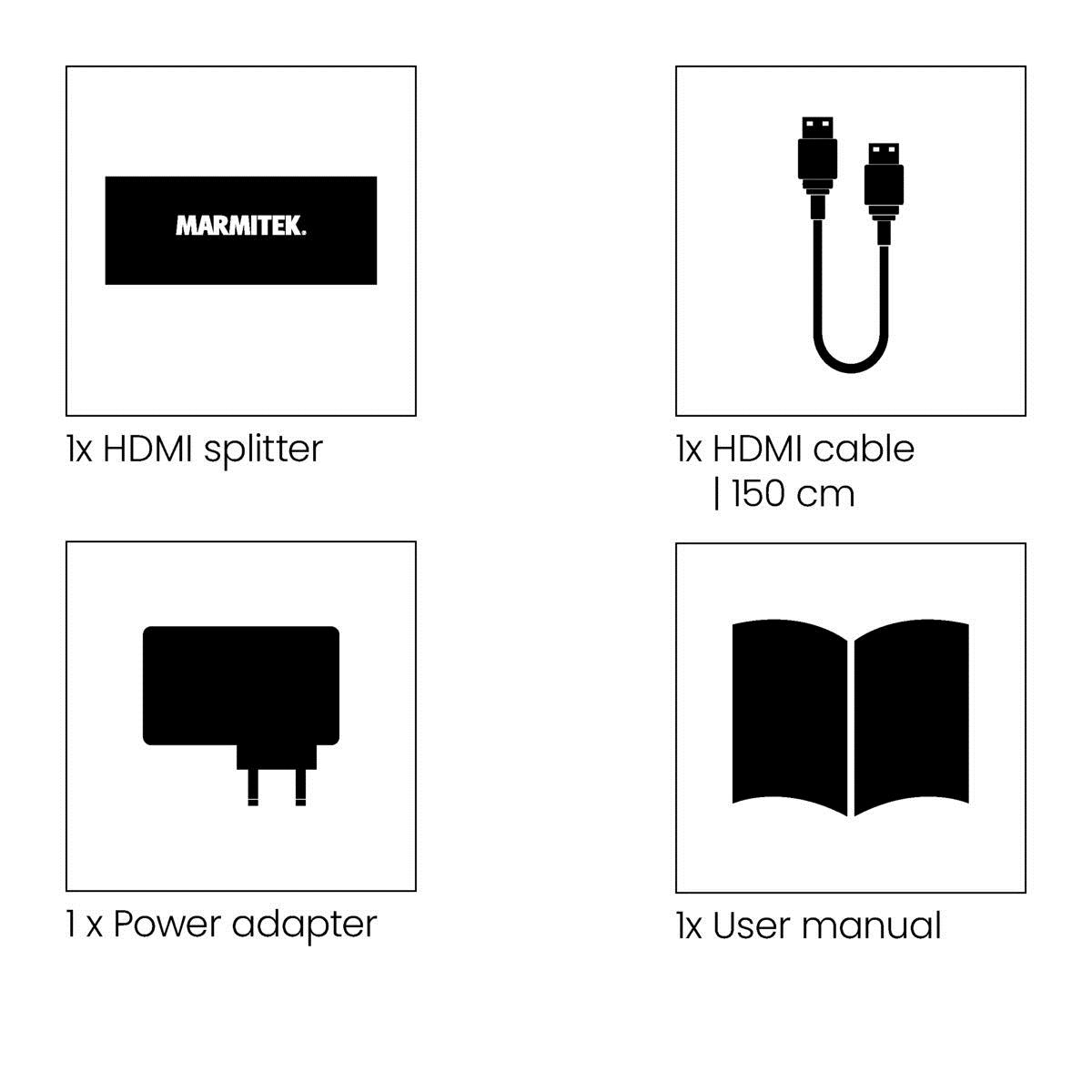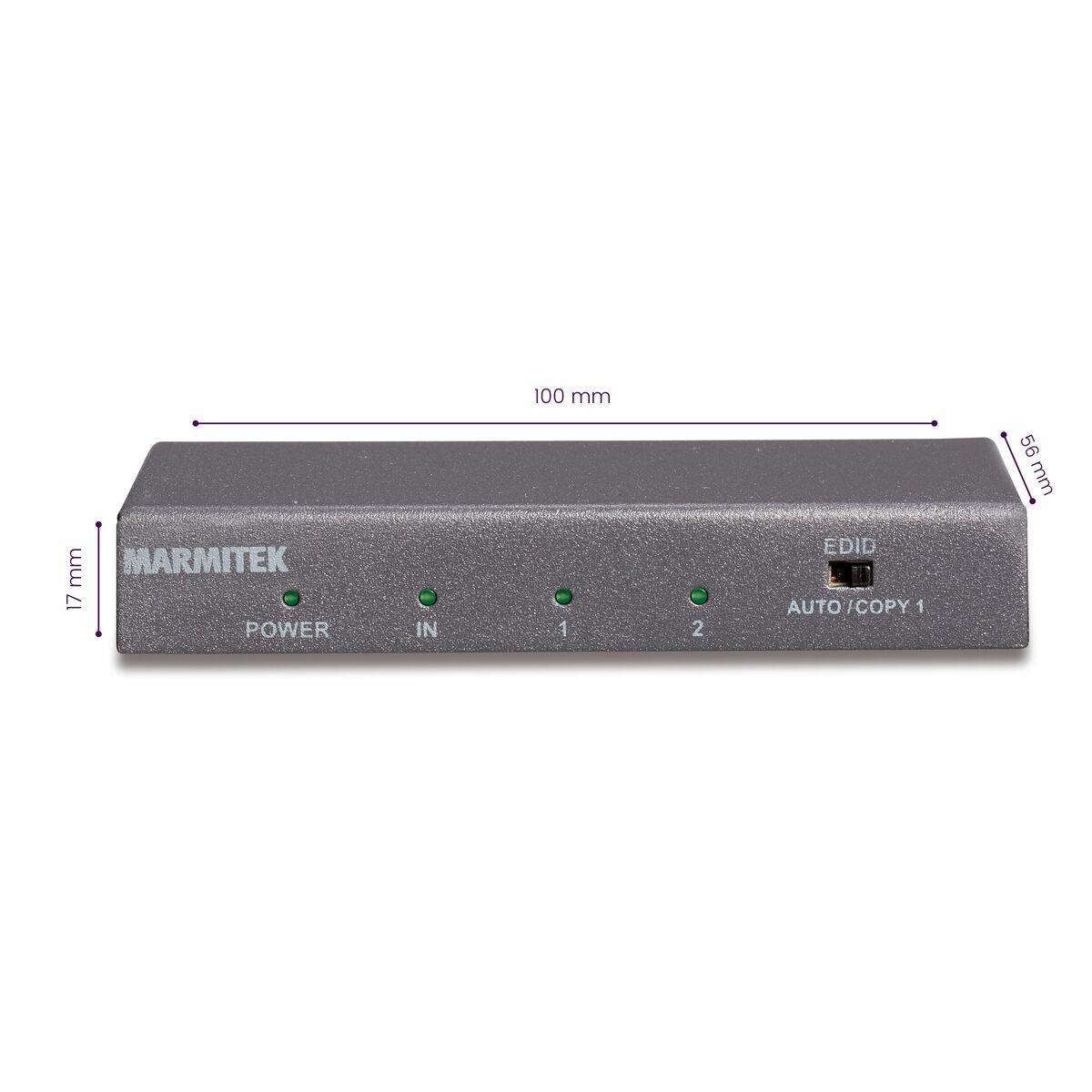 MARMITEK Split 612 Uhd 2.0 Hdmi Splitter
MARMITEK Split 612 Uhd 2.0 Hdmi Splitter
For personal help or faster delivery
+32 2 558 30 00
The Split 612 UHD 2.0 enables you to split the HDMI signal from your decoder or another HDMI source to 2 TVs. Ideal when you want to show the same presentation or film on 2 screens at the same time.
The UHD 2.0 range is suitable for connections with the very latest Ultra HD equipment, provided these are equipped with both HDMI 2.0 and HDCP 2.2 security.
HDMI 2.0 Compared to HDMI 1.4, the main improvement of HDMI 2.0 is its higher bandwidth (higher data rate), enabling 4K with higher frame rates and HDR.
The amount of data that can be sent is increased from 10.2 Gbps to 18 Gbps. This makes it possible to display 4K using a frame rate of 50-60 frames per second, 4:4:4 and HDR. HDMI 2.0 also offers support for a larger colour range (12-bit instead of 8-bit) and Dual View.
HDCP 2.2 4K Ultra HD content is increasingly becoming the standard. Due to this development in digital video technology, the current copy protection, HDCP, has evolved into HDCP 2.2. To play the latest Ultra HD content (4K films or broadcasts) in the best possible image quality, all your AV equipment in the same chain must support this HDCP 2.2 security.
So, this does not only apply to the source and your TV. If, for example, you route your HDMI signal via an HDMI switch, splitter, AV receiver or soundbar, they must all be HDCP 2.2 compliant as well. If that is not the case, the material will not be displayed in the highest possible resolution (1080p instead of 4K) + the corresponding image quality OR will sometimes not be displayed at all.
Well prepared Marmitek UHD 2.0 switch gear enables you to prevent these (future) problems and to make the most of your (existing) equipment. This range is HDMI 2.0/HDCP 2.2 compliant and therefore the best solution for connecting your HDMI devices and TVs.
HDRHDR stands for High Dynamic Range. HDR provides images with greatly enhanced brightness and higher contrast (brighter white and deeper black). Combined with better colour rendering, this creates a more realistic and natural image. In order to enjoy HDR, your TV does need to support the HDR feature. Material displayed in HDR quality (such as 4K Blu-ray, Netflix and YouTube) can then easily be played on your TV. HDR does not add more pixels, like 4K Ultra HD does, but enhances the pixels that are there.
Results 0
- Reviews
- Write Review
- Questions and Answers
- Ask Question


